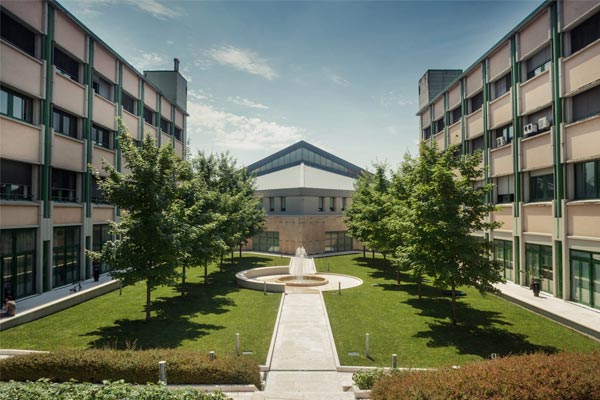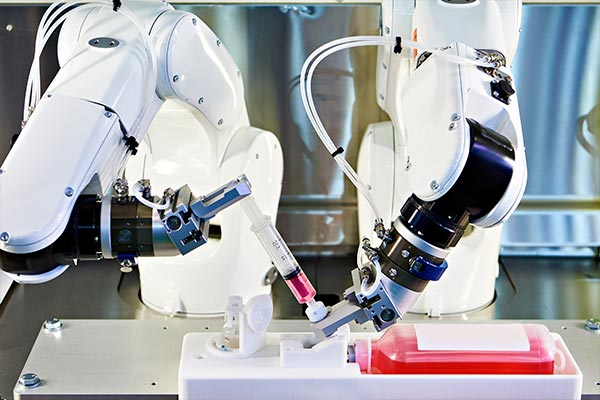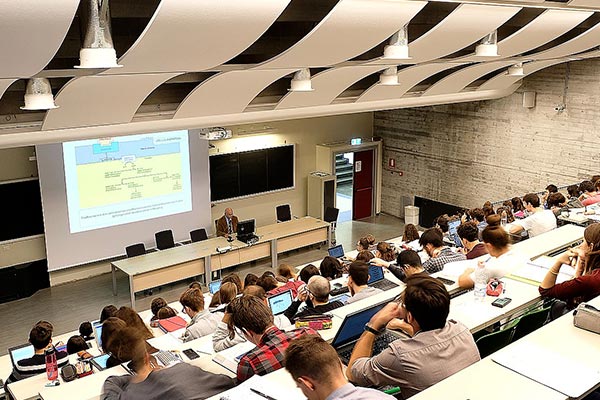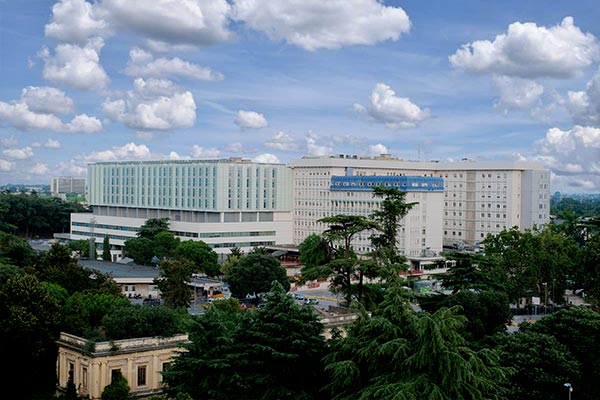Office Hours
Wednesday,
Hours 2:00 PM
- 3:00 PM,
Si prega di concordare l'appuntamento.
- Curriculum
-
Gloria Menegaz è Professore Ordinario di Bioingegneria (SSD ING-INF/06) presso il Dipartimento di Ingegneria per la Medicina di Innovazione dell’Università di Verona. E' stata Direttore della Scuola di Dottorato in Scienze Naturali e Ingegneristiche dal 2014 al 2019. Dal 2004 al 2007 è stata Prof. Associato presso lo stesso Dipartimento, dopo aver trascorso tre anni (2004-2007) presso il Dipartimento di Ingegneria dell’Informazione dell’Università di Siena come Professore Aggregato quale vincitrice del bando Rientro dei Cervelli del MIUR (DM 20/03/2003 n. 501). Dal 2002 al 2004 è stata Prof. Assistente presso il Dipartimento di Informatica dell’Università di Friborgo (Svizzera), dopo un post-doc (2000-2002) presso il Lab. Di Comunicazioni Audiovisuali (LCAV) e presso il Lab. Di Bioimaging (BIG) del Politecnico Federale di Losanna (EPFL). Ha conseguito il PhD in Applied Sciences (Docteur ès Sciences Techniques) presso il Lab. di Elaborazione dei Segnali (LTS) dell’EPFL nel 2000, la laurea in Ing. Elettronica con indirizzo Microelettronica, Optoelettronica e Strumentazione presso il Politecnico di Milano (1993 e 1995) ed il Master in Tecnologie dell’Informazione presso il CEFRIEL-Politecnico di Milano. Il suo profilo scientifico è altamente interdisciplinare e include l’elaborazione di segnali e immagini con applicazione in ambito biomedico (neuroimaging), l'intelligenza artificiale e lo studio e la modellazione della percezione. E’ autore di piu di 190 pubblicazioni che includono riviste prestigiose quali IEEE Trans. on Image Proc., IEEE Trans. on Medical Imaging, Frontiers in Neuroscience, Human Brain Mapping, Journal of Neural Engineering, 2 capitoli di libri e due brevetti. E’ Senior Member dell’IEEE, componente dell’Editorial Board of the Eurasip Journal of Image and Video Processing e TPC e area chair di numerosi congressi internazionali (IEEE ISBI, IEEE ICIP, EUSIPCO). E’ esperto valutatore di progetti per diversi enti internazionali tra cui la commissione europea (H2020, FP7, ESA), la European Science Fundation (ESR), il MIUR (PRIN, SIR, FIRB, RLM), l’ANR (Francia) e la Swedish Knowledge Foundation.
Gloria Menegaz is Professor of Bioengineering at the Dept. of Computer Science, University of Verona (Italy), where she leads the BraiNAVLab consisting of one Associate Prof., two Assistant Professors, one post-doc, one research assistant and four PhD students. She holds a PhD in Applied Sciences (EPFL 2000), a MSc in Electronic Engineer (1993) and a post-grade Master's in information technology (1995) (Politecnico di Milano, Italy). From 2000 to 2002 she was first research assistant at the Telecommunications Lab (LCAV) of EPFL, headed by Prof. Martin Vetterli, that she left to join the Computer Science Dept. of the University of Fribourg (Switzerland) as an Assistant Professor. In 2004 she was awarded the Rita Levi Montalcini grant by the Italian Ministry of University and Research (MIUR)(DM 20/03/2003 n. 501) and joined the Dept. of Information Engineering of the University of Siena (Italy) as an Assistant Professor. In 2007 she joined the Dept. of Computer Science of the University of Verona (Italy) as an Associate Professor in Computer Science and became full Professor in Computer Science in 2017 and Professor in Bioengineering (ING-INF/06) in 2021. Prof. Menegaz is a Senior Member of the Institute of Electrical and Electronics Engineers (IEEE, 2017, valued member 1995-2017), and member of the IEEE Woman in Engineering since 2000. She is a member of the Signal Processing Society (SPS), Liason representative of the IEEE-SPS at the IEEE Transactions on Medical Imaging (TMI), Member of the Medical Image Computing and Computer Assisted Intervention Society (MICCAI) Special Interest Group on Biomedical Image Analysis Challenges (SIG-BIAC) and co-chair of the TC on Challenges & Data Collections CDC of the IEEE Bioimaging and Signal Processing (BISP) Committee of the IEEE (Co-chair Prof. Vince Calhoun, Georgia Institute of Technology). She is also a Member of the Ad Hoc Group (AHG) on Digital Media Storage using DNA (JPEG-DNA) and Observer for the DICOM WG-32 (Neurophysiology data). She is Associate Editor for IEEE-SPL, Guest Editor of the IEEE-SPM and Review Editor for Frontiers journal on Computational BioImaging (Front. in Bioinformatics) and Computer Vision. She has been Vice-Chair for the FET-REA and the MSCA-IF for many years and Independent Expert for many international Institutions including European Science Fundation (ESF), SKF, Sweden, among others. She authored more than 120 publications in international journals and conference proceedings and one patent and is chair, area chair and technical committee member of many international conferences, especially of the IEEE.
Prof. Menegaz holds a highly interdisciplinary profile, starting with a MSc in Microelectronics, focusing on physics and optics aspects, moving to ICT topics with the post-grade MSc and then the PhD, where she has been working on compression and coding of multi-dimensional medical data with application to medical imaging. During this work she faced topics related to visual perception investigation and modeling, with emphasis on color vision contributing in the field of color naming in Italian language. After joining the University of Verona, she directed her research activity on neuroimaging, brain connectivity (structural, functional and effective), brain microstructure modeling imaging genetics and numerical biomarker discovery relying on classical and AI (statistical/machine/deep learning) focusing on explainable methods. During her career she was granted funding from different international institutions for a total of more than 1M euros. Of note, the Rita Levi Montalcini program (MIUR, D.M. n.96 del 23.04.2001, 01/03/2004-28/02/2007) and the PRIN-2009, BrainFit: Brain tractography from diffusion imaging for radiotherapical and surgical planning as the national PI, AI4Health: empowering neurosciences with eXplainable AI methods (230000 euro), PI, funded under the and the MUR DM737/2021. She has a rich network of international collaborations including the Georgia Tech University (TRENDS lab), INRIA (France), the University of Poitiers (France), EPFL (Switzerland), the Queen Mary University (QMU, London) and University College London (UCL) among others, as testified by the publication record. Prof. Menegaz directed 13 PhD thesis and supervised more than 40 MScs and many exchange MSc students. She holds active collaborations with industrial partners among which a long lasting collaboration with EBNeuro SPA, also partner in this proposal.








 menegaz
menegaz univr
univr
